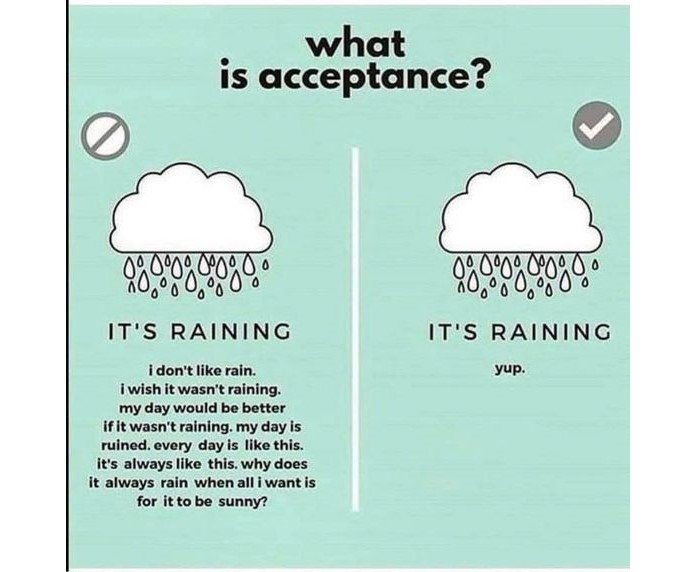This is the third in my series on ACT and Recovery. In this post I will be focusing on the ACT process of mindful contact with the present moment, or mindfulness for short. Integrating mindfulness practices can be a powerful tool in fostering lasting change. Acceptance and Commitment Therapy (ACT), a powerful therapeutic approach, introduces the concept of mindful contact with the present moment as a key element in the recovery process. In this post, we’ll explore how incorporating mindfulness into the journey of recovery can provide you with the tools to overcome the challenges of addiction and move towards a life aligned with your values.
Firstly, what is, Contact with the Present Moment?
Mindful contact with the present moment is a fundamental principle of ACT that encourages individuals to engage with their thoughts and feelings as they arise, fully and compassionately and, most difficultly, without judgment. That is, resisting the urge to judge certain thoughts and experiences as ‘good’, and others as ‘bad’. Unlike traditional approaches that may focus on suppressing or controlling unwanted thoughts, or on trying to make unwanted thoughts disappear, ACT emphasizes awareness and acceptance of uncomfortable or unwanted thoughts and feelings whilst acknowledging that these experiences are certainly unwanted and unpleasant.
This approach recognizes unwanted private experiences, including intense emotions, cravings and urges, as well as disturbing memories and associated negative thoughts are part of the human experience, and that avoiding uncomfortable thoughts and emotions can contribute to the cycle of addiction.
Mindfulness, in the context of ACT, involves being fully present in the moment and observing your thoughts and feelings with openness and curiosity. By simply cultivating an attitude of non-judgmental awareness, you can learn to develop a healthier relationship with your inner experiences, instead of repeated, and ultimately unsuccessful, attempts to avoid, distract or suppress these instead with addictive behaviours and/or substances.
Breaking the Cycle of Avoidance:
Addiction often develops over time and can sometimes be driven by a desire to escape or numb emotional pain. This cycle of avoidance can perpetuate substance abuse as individuals seek temporary relief from their struggles. Mindful contact with the present moment disrupts this cycle by encouraging you to slow down, observe and to confront your emotions head-on.
Through practicing mindfulness, you can learn to sit with discomfort, observe cravings without succumbing to them, and you may even develop greater insight into the underlying issues fuelling your addiction. This non-avoidant approach fosters emotional resilience, enabling you to face the challenges of recovery with greater self-awareness.
Cultivating Mindfulness in Daily Life:
Incorporating mindfulness into daily life is a gradual but transformative process. ACT provides practical tools and exercises to help individuals build mindfulness skills. One such tool is the concept of “defusion,” which involves stepping back from and disentangling yourself from thoughts and emotions. By viewing thoughts as passing events rather than permanent truths, you can reduce the power that cravings and negative emotions have over you.
Mindful breathing exercises, body scans, and meditation are also integral components of cultivating mindfulness. These practices promote self-regulation and aid in developing an increased awareness of the present moment. As you progress through your recovery journey with your new mindfulness tools onboard, you will become more attuned to your internal experiences, which means you can respond to triggers and challenges in a more intentional and constructive manner.
Connecting with Values and Commitment:
While mindfulness lays the foundation for recovery, ACT goes a step further by emphasizing the importance of clarifying one’s values and committing to meaningful actions aligned with those values. We have already discussed the importance of values in an earlier post. Identifying and aligning with your personal values provides a sense of purpose and direction, motivating you to make choices that contribute to your overall well-being.
Mindful contact with the present moment serves as a guide stick which helps you navigate the path towards your recovery goals. By staying present and aware, you can begin to make conscious choices that align with your long-term goals rather than succumbing to impulsive, short-term relief through substance use.
Addressing Relapse with Compassion:
Relapse is a common challenge in the recovery journey, and ACT approaches it with a compassionate understanding. Instead of viewing relapse as a failure, try to see it as an opportunity for learning and growth. Mindful awareness helps you to examine the circumstances leading to the relapse without self-condemnation, fostering a greater understanding of your triggers and which vulnerabilities are at play.
Mindful self-compassion, a concept integrated into ACT, encourages you to treat yourself with the same kindness and understanding you would offer to a friend facing similar challenges. This self-compassionate mindset helps mitigate feelings of shame and guilt, promoting resilience and a renewed commitment to the recovery journey.
So whilst navigating the complexity of addiction recovery, the concept of mindful contact with the present moment, as offered by Acceptance and Commitment Therapy, emerges as a guiding light. By incorporating mindfulness, you can break free from the cycle of avoidance, confront your emotions with courage, and develop a deeper understanding of the roots of and drivers of your addiction. As mindfulness becomes woven into the fabric of your daily life, you can supercharge your recovery by aligning your actions with your values, fostering a sense of purpose and direction, increased self-confidence and a self of achievement. The journey to recovery is undoubtedly challenging, but with mindfulness as a companion, you can navigate its twists and turns with resilience, compassion, and a renewed commitment to a life of meaning and fulfillment.












